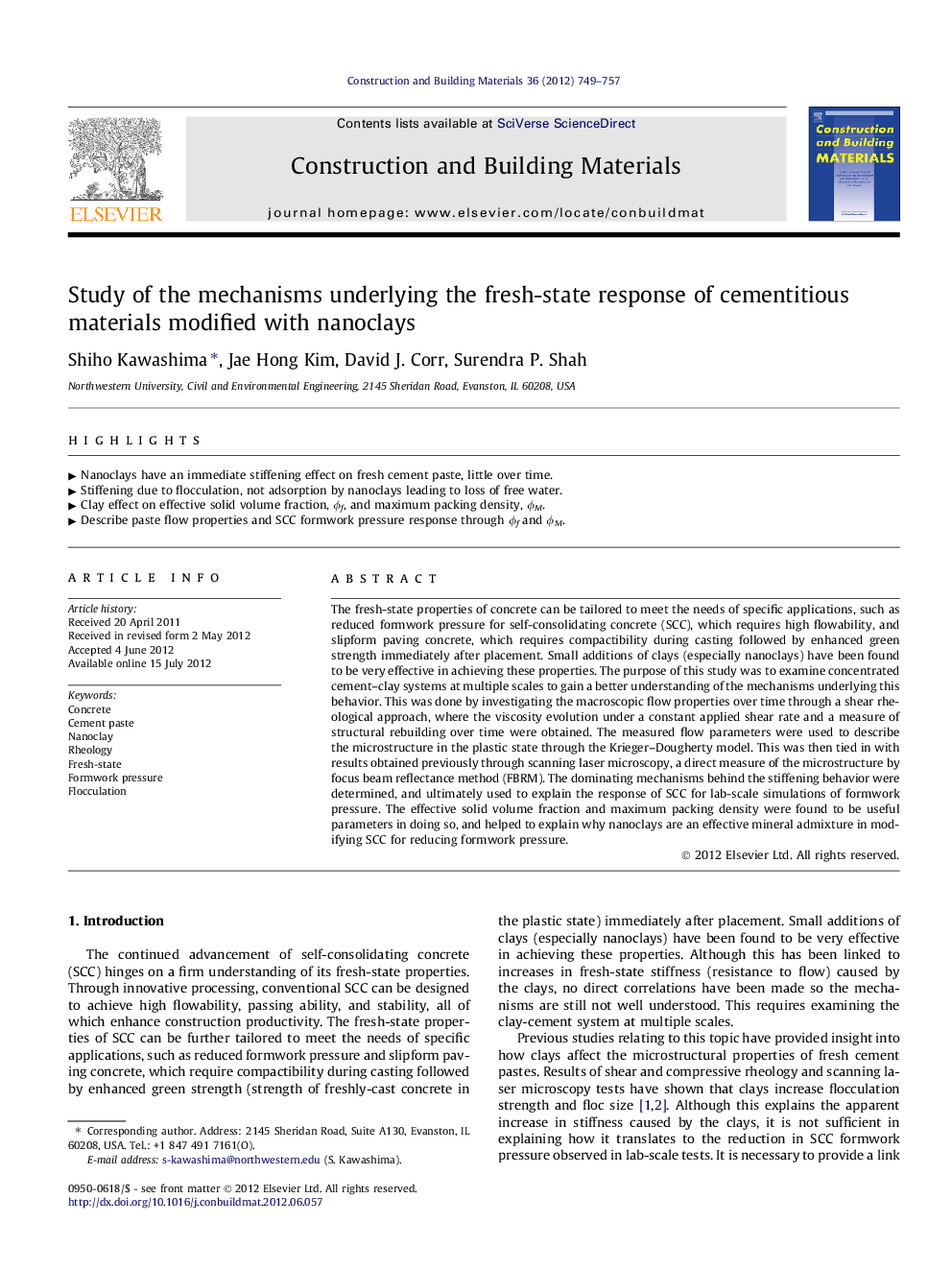| کد مقاله | کد نشریه | سال انتشار | مقاله انگلیسی | نسخه تمام متن |
|---|---|---|---|---|
| 258678 | 503621 | 2012 | 9 صفحه PDF | دانلود رایگان |

The fresh-state properties of concrete can be tailored to meet the needs of specific applications, such as reduced formwork pressure for self-consolidating concrete (SCC), which requires high flowability, and slipform paving concrete, which requires compactibility during casting followed by enhanced green strength immediately after placement. Small additions of clays (especially nanoclays) have been found to be very effective in achieving these properties. The purpose of this study was to examine concentrated cement–clay systems at multiple scales to gain a better understanding of the mechanisms underlying this behavior. This was done by investigating the macroscopic flow properties over time through a shear rheological approach, where the viscosity evolution under a constant applied shear rate and a measure of structural rebuilding over time were obtained. The measured flow parameters were used to describe the microstructure in the plastic state through the Krieger–Dougherty model. This was then tied in with results obtained previously through scanning laser microscopy, a direct measure of the microstructure by focus beam reflectance method (FBRM). The dominating mechanisms behind the stiffening behavior were determined, and ultimately used to explain the response of SCC for lab-scale simulations of formwork pressure. The effective solid volume fraction and maximum packing density were found to be useful parameters in doing so, and helped to explain why nanoclays are an effective mineral admixture in modifying SCC for reducing formwork pressure.
► Nanoclays have an immediate stiffening effect on fresh cement paste, little over time.
► Stiffening due to flocculation, not adsorption by nanoclays leading to loss of free water.
► Clay effect on effective solid volume fraction, ϕf, and maximum packing density, ϕM.
► Describe paste flow properties and SCC formwork pressure response through ϕf and ϕM.
Journal: Construction and Building Materials - Volume 36, November 2012, Pages 749–757